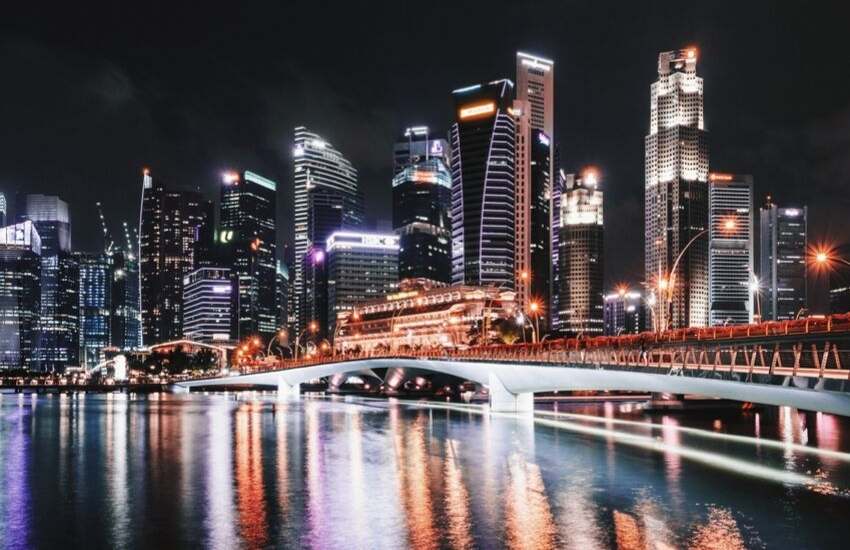What Keeps Singaporean Storage Operators Awake?
While tank terminals perform several important functions, the most important is the role they play in physically balancing supply and demand along the supply chain as well as facilitating trade. Demand for tank terminal capacity from storage operators has seen huge growth over recent years to facilitate interregional and regional trade flows caused by the unbalanced oil product and petrochemical markets. In addition, the various periods of contango term structure on oil futures markets made access to oil product storage capacity a profitable position. Consequently, profits of storage operators surged and investments in tank terminal assets grew substantially with a lot of new capacity hitting the market in recent years.
This article is written by Rudi Stalmans and featured in the August/September 2019 Edition of Tank Storage Magazine.
These developments have contributed to major growth in regional tank terminal hubs. Globally, the most important hub locations are the US Gulf with Houston, the ARA (Amsterdam, Rotterdam, Antwerp) zone in Europe, Fujairah in the Middle East, and Singapore and Ulsan in the Asia Pacific.
Global tank terminal database tankterminals.com currently lists more than 4,900 tank terminals worldwide with a total capacity of 1,023,632,553 m3. Houston, Antwerp, Rotterdam, Amsterdam, Fujairah, Singapore, and Ulsan together represent a total storage capacity of 103 million m3.
The top three ports globally for total hub capacity are Houston with 30%, Rotterdam with 20%, and Singapore with 15%. Although the total capacity at these hubs is small compared to the global tank storage capacity, these locations play a vital role in the global trade of oil products and petrochemicals.
Currently, four main themes affect the Singaporean tank storage operators, namely slower global growth, tensions in the Strait of Hormuz, logistics developments around Malacca, and IMO 2020.
Growth remains subdued
The US Energy Information Administration (EIA) has recently revised down its expectation for global liquids demand growth for six consecutive months to reflect slower-than-expected economic growth in many of the world’s largest oil-consuming countries. It has noted lower-than-expected oil consumption so far in 2019, and higher crude oil prices.
In its July 2019 report, it predicted that consumption of global liquid fuels will increase by 1.1 million b/d in 2019 and by 1.4 million b/d in 2020. Global liquid fuel consumption averaged 99.9 million barrels/day in 2018.
Overall global growth remains somber in an environment of US-China trade tensions and continued uncertainty around a never-ending Brexit discussion. In July 2019, China’s economic growth even slumped to its lowest level in nearly three decades as the world’s second-largest economy feels the effects of a lengthy trade war with the US.
Singapore, which is often seen as an indicator of the world’s economy due to its dependence on foreign trade, is also feeling the pinch and saw a sharp contraction in the second quarter of this year. The country’s GDP shrank an annualized 3.4% – well off forecasts of a slight expansion and well down from 3.8% growth during the first quarter of the year. On a year-on-year basis, Singapore saw its slowest rate of expansion since the global financial crisis in 2009 and has now cut its forecast for economic growth this year to almost zero.
Tensions in the Strait of Hormuz
Recently Iran and the West have been involved in a dispute over shipping near the Strait of Hormuz as many nations try to save the 2015 nuclear deal with Iran after the US pulled out. As the most important oil chokepoint in the world, with an estimated 21% of global petroleum liquids passing the Strait of Hormuz according to the EIA, any tensions are felt in the markets. Vessels that only go to Fujairah for bunkering will probably try to avoid the port during times of tension and may instead visit Singapore. Many ships however have no choice but to sail through the strait to transit, load, or discharge cargoes against much higher insurance premiums. Any issue around a major chokepoint, which is defined as a narrow channel along a widely used global sea route that is critical to global energy security, will create uncertainty and have a negative impact on the global economy and storage operators.
Not the only chokepoint
The Strait of Malacca is another critical chokepoint connecting the Indian Ocean to the Pacific Ocean. According to the EIA, roughly 20% of the total global petroleum and liquids production transited the Strait of Malacca in 2015. Also, up to 80% of China’s energy needs is estimated to pass through the Strait of Malacca. Singapore plays an important role in this major Asian chokepoint and sees a lot of ships passing through its port.
The Strait of Malacca is a major concern for China, which needs to secure the energy needs for its growing domestic market. In July 2019, China even raised the security level for its vessels heading through the Strait of Malacca without providing a clear reason. The crude and gas pipelines from Myanmar to China are important strategic developments for China and key to the country’s Two Oceans strategy to diversify its energy supply away from the Strait of Malacca.
Around the Strait of Malacca, Malaysian ports will also continue to increase their tanker and container vessel handling capacity and service capabilities, which will result in fewer ships calling Singapore. On top of this, the One Belt and One Road Initiative aims to enhance inland transportation and divert some volumes away from the Strait of Malacca, potentially hurting the port of Singapore.
Continue to read part 2 of this article – A Top Bunkering Port For Low Sulphur Fuels.
Photo Credit: Sebastian Pichler on Unsplash

